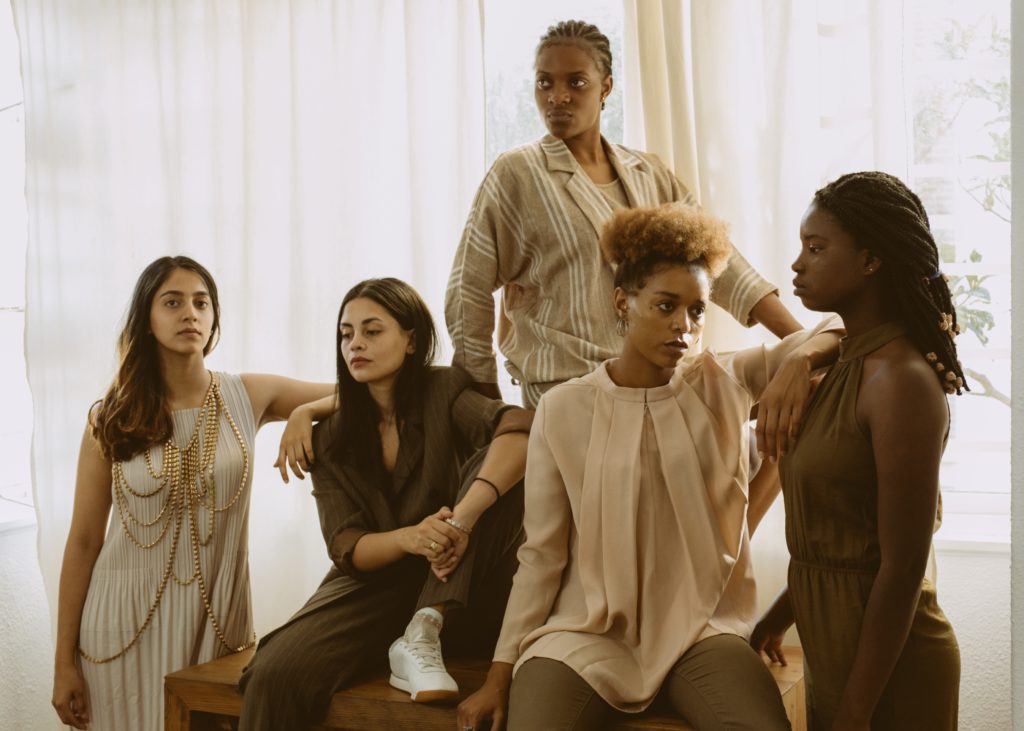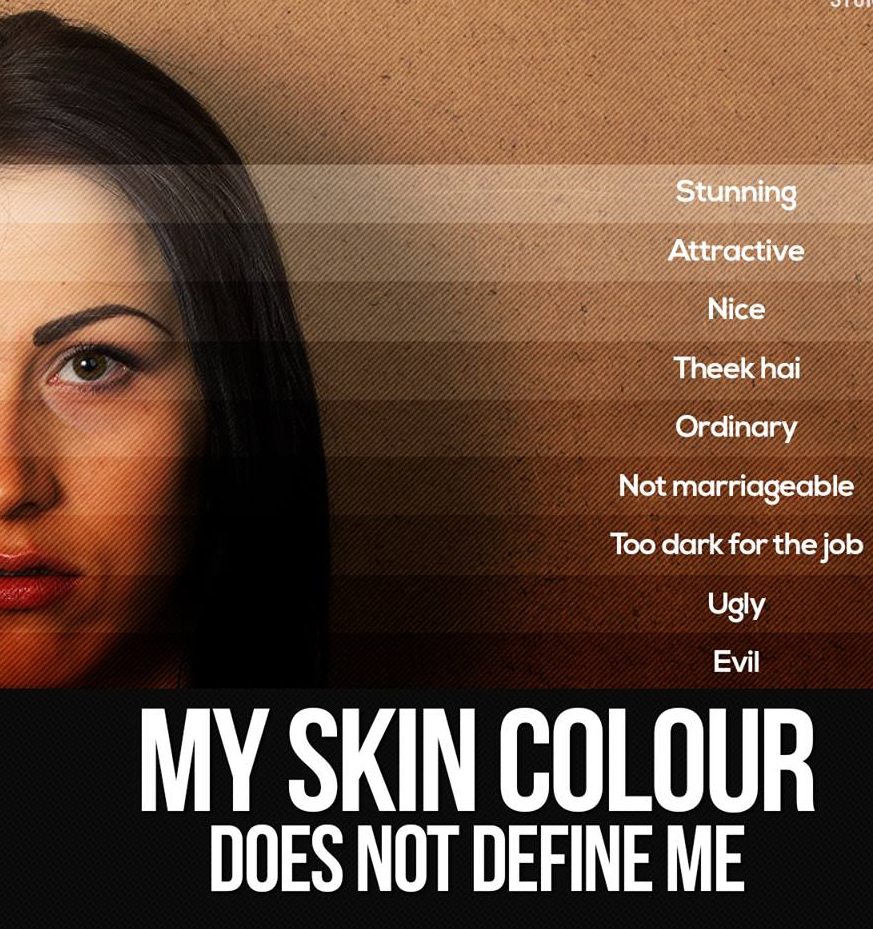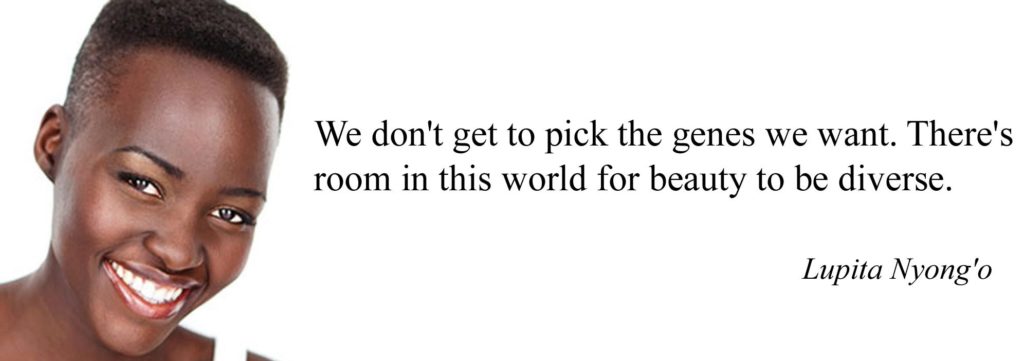
Colorism is when people of color not only face prejudice outside their ethnic group but among members of their own race as well. It highlights the biases that exist within specific ethnic groupings that lighter complexions are more attractive and valuable than darker ones. It’s s a societal problem that needs to be fought with the same intensity as other forms of prejudice. Learn three ways you can contribute to this cause. (Estimated reading time: 6 minutes)
“I am not my hair. I am not this skin. I am the soul that lives within.”
— India Arie
Porcelain. Sand. Honey. Olive. Maple. Deep Chocolate. Cinnamon. Mocha. Caramel. Bronze.
These are a few of the names used to describe different shades of skin.
When buying makeup, recognizing the microscopic gradients in skin color is necessary if you want to avoid buying a foundation that will make you look paler or darker than your natural tone.
If you want the most flattering look, you must embrace your natural skin but, so many people have a tough time doing so because of the social meaning attached.
Racism has made it clear that there is an implicit color-based hierarchy where skin is concerned. The social implication is that people face discrimination based on skin color, both in professional and personal spaces.
People of color not only face prejudice outside their ethnic group but among members of their own race as well. This is a phenomenon called colorism (also known as shadeism). Colorism highlights the biases that exist within specific ethnic groupings that lighter complexions are more attractive and valuable than darker ones.
Colorism is prevalent in communities where a variety of skin shades exist. This includes African, Latin American, Caribbean, Eastern, and Southeast Asian groups.
As someone who is considered to have a lighter complexion on the Indian skin color spectrum and who has lived among different races and nationalities, I did not face the brunt of this prejudice. But, the idea that “fairer is better” did not miss me entirely.

When I was a kid, I was slathered in sunblock before playing out in the sun so that I didn’t get darker. In high school, I noticed that the popular girls were mostly lighter, and darker girls were looked down on. I was made to feel inferior by a fairer-skinned (and obviously insecure) relative.
The desirability for fairness is drilled into young girls in India, and other communities of color, from an early age because of social pressure. Preferences for lighter skin is especially evident in arranged marriage circles where families openly specify “fair skin” as a vital match criterion.
Whether it’s in matrimonial ads or instructions to a matchmaker, parents ask for a bride who is “good looking and fair.” Even in the professional sphere, darker-skinned candidates are less favored for higher-paid positions. Students with darker skin are more likely to be bullied.
Attitudes like this have led to a booming demand for skin whitening and bleaching products. Creams like “Fair & Lovely” have become fixtures in Indian households along with other soaps, serums, and “antidotes” that offer the promise of lighter and clearer skin.
Viewing a pale complexion as a sign of power has been around Indian society for centuries, with roots in the caste system and influences from the Persian. Mughal, and British invasions. Historians say British colonial rulers intensified it by favoring fairer Indians for government jobs.

Colorism is a major issue in the African American community to this day. These biases also date back to colonial times, when lighter-skinned slaves from Africa were given preferential treatment. They could live in the house of a slave owner, were given less grueling tasks, and were seen as more intelligent, while darker-skinned slaves toiled outside in the fields.
Even after slavery was abolished in the U.S., colorism persisted in the African American community. In the 1900s, upper-class black Americans determined whether a member of their community was sufficiently white enough to join their circles by doing the “brown paper bag” test. A paper bag was held against their skin, and if they were darker than the bag, they were rejected from exclusive institutions like black fraternities, churches, and civic groups.
Colorism is pervasive not only in the Indian and African American communities, but in Latin, Arab, East Asian, and interracial circles too. Lighter skinned people enjoy privileges and real-world advantages at the expense of their darker-skinned counterparts. Research shows that it leads to a disparity in incomes, fewer job opportunities, fewer romantic prospects, and longer prison sentences.
This kind of favoritism ignites feelings of contempt and anger to those who experience discrimination. They feel less worthy simply because they have more melanin in their skin. Children who pick up on this grow up with damaged self-esteem that prevents them from exploring their potential because they’re unable to see themselves beyond the labels of color.

Colorism is a societal problem that needs to be fought with the same intensity and urgency as other forms of prejudice if we are to create a more just society. We need to celebrate all colors in the human spectrum instead of praising one over the other, or pretending that the problem doesn’t exist.
Here are three things that we can do as individuals to overcome colorism:
1. Recognize it within yourself: As the saying goes, you can’t change what you don’t acknowledge within yourself. Whether you are a colorist or a darker-skinned person who deals with discrimination, you need to name it and see it for what it is. Healing begins with noticing whenever you sense prejudice impacting your interactions. Awareness and an openness to seeing the beauty in all skin tones will reframe the meaning you attach to skin color.
Question the stereotypes you were taught and shift your attitude by educating yourself, traveling, and befriending people outside your ethnic community. When you expose yourself to other paradigms, you’ll think of yourself and others differently.
2. Become a role model for younger generations: The conversations around color begins at home. This is especially important if you are a parent or teacher raising younger children who are in the nascent stages of developing a sense of self. Parents need to create a safe space where the rhetoric of color hierarchy is not allowed to seep into the minds of children. Instead, they should be taught to feel proud of the way they look and become tolerant of the color differences in others.
Teachers need to communicate to children that it’s not okay to judge a person based on their skin color and make them question any implicit biases they might have picked up from the media, pop culture, or their social circles. Facilitating conversation about colorism in homes, classrooms, and other learning communities that mold young minds, is the gateway to changing the perception of color in society.
3. Become an advocate and raise awareness: Once we come to grips with colorist tendencies within ourselves and in our communities, we can move to the next level by engaging in cross-cultural dialogues. We must initiate efforts to collectively address this issue on a personal and institutional level. If you encounter anyone making colorist jokes and degrading another person, be willing to have those difficult conversations with them. Lend a ear and be a witness for those who are bullied or face trauma because of the judgments of others. Join organizations focused on empowering and teaching people to redefine beauty standards.
If you’re someone battling your own insecurities because of your skin color, seek the professional help you need by speaking with a counselor or by joining support groups.
Martin Luther King Jr. famously said in his seminal “I Have a Dream” speech, that he dreamed of a nation where people would “not be judged by the color of their skin but by the content of their character.” Great visionaries like him recognized that who we are and what we do with our lives should be the only yardstick with which to measure a person’s worth. When we adopt this truth, we’ll be well on our way to being guided by love and tolerance.
All my best on your journey,
Seline

Question for you: Have you ever encountered colorism? How did you react? What emotions did it bring up?
Did you like this post? Sign up below, and I’ll send you more awesome posts like this every week

Loved your post!!!! This is so true and definitely an issue to take up and talk about
Wonderful content here! Thank you for sharing it with the rest of us. This is a message that more people need to hear and take to heart. I’ve been a victim of colorism and I’ve seen it happen to my friends…nice to know that we are not alone! Thank you for doing your part and for being a part of the solution Seline. 🙂
You’re welcome Nila! 🙂